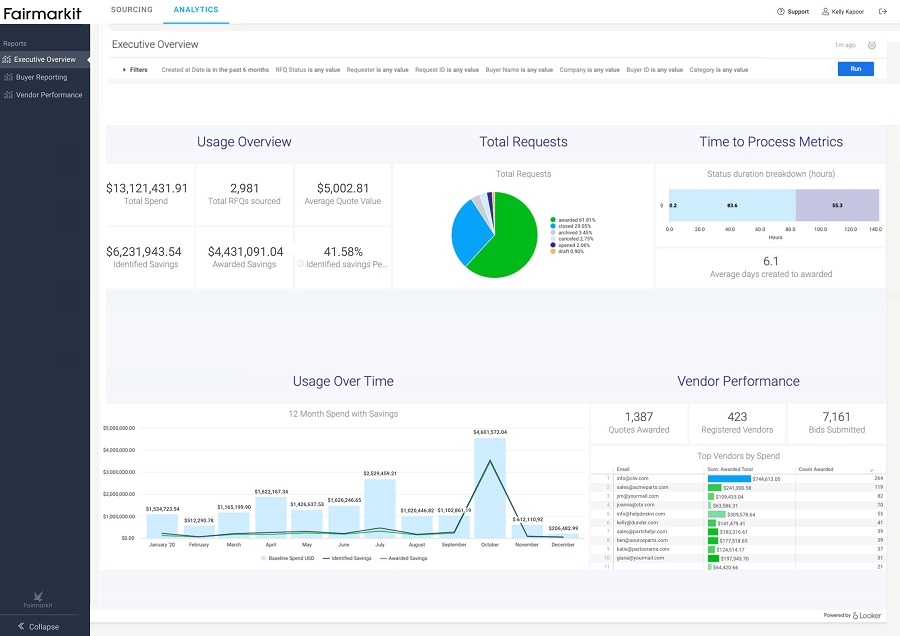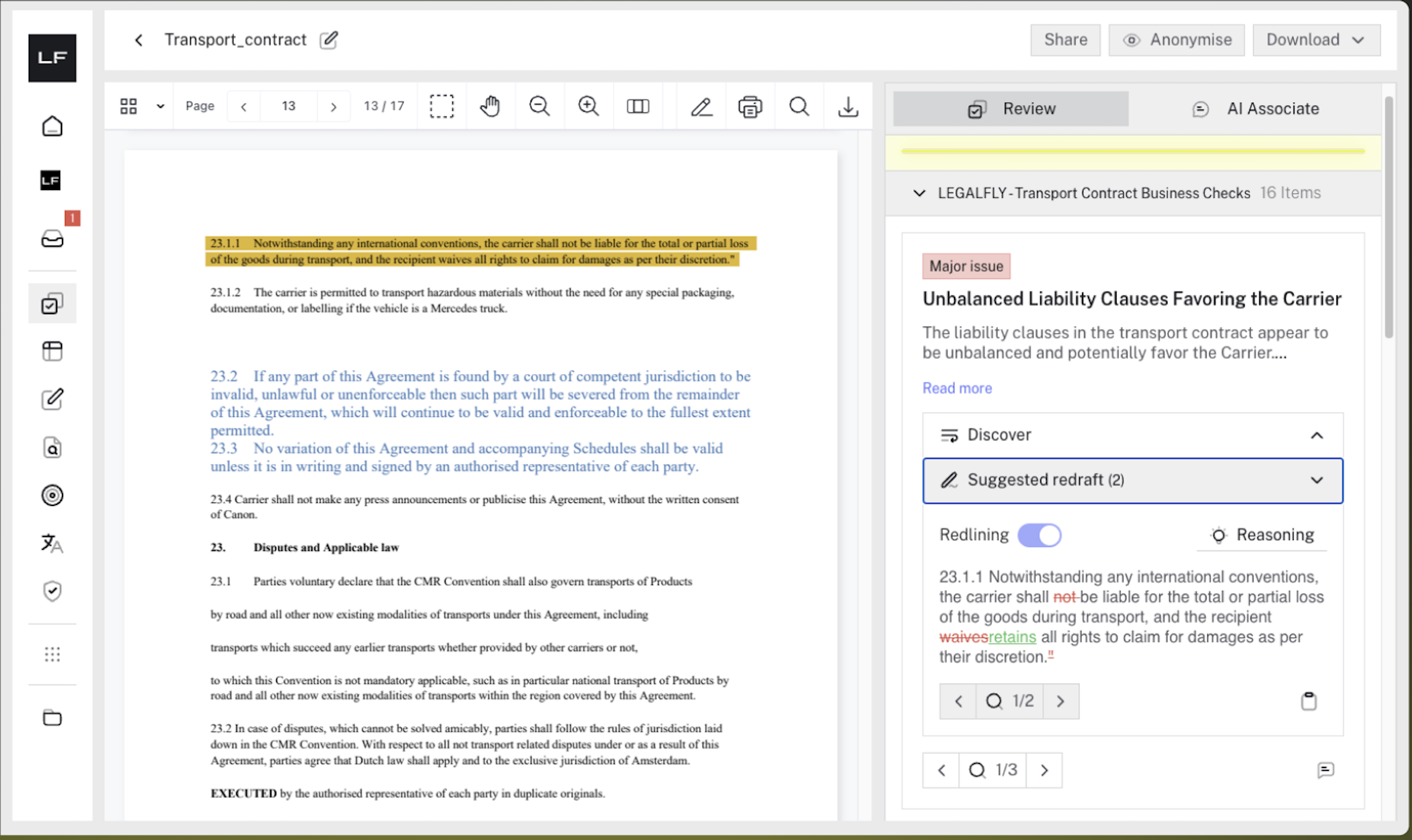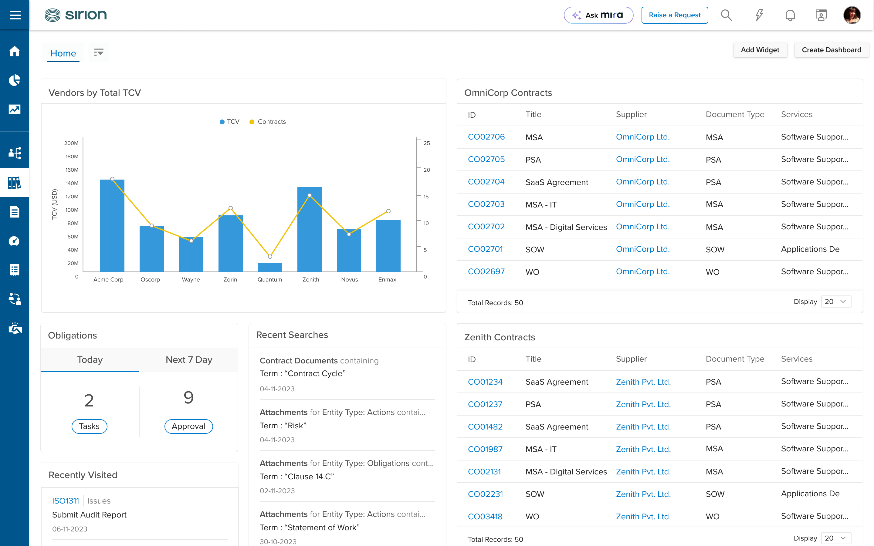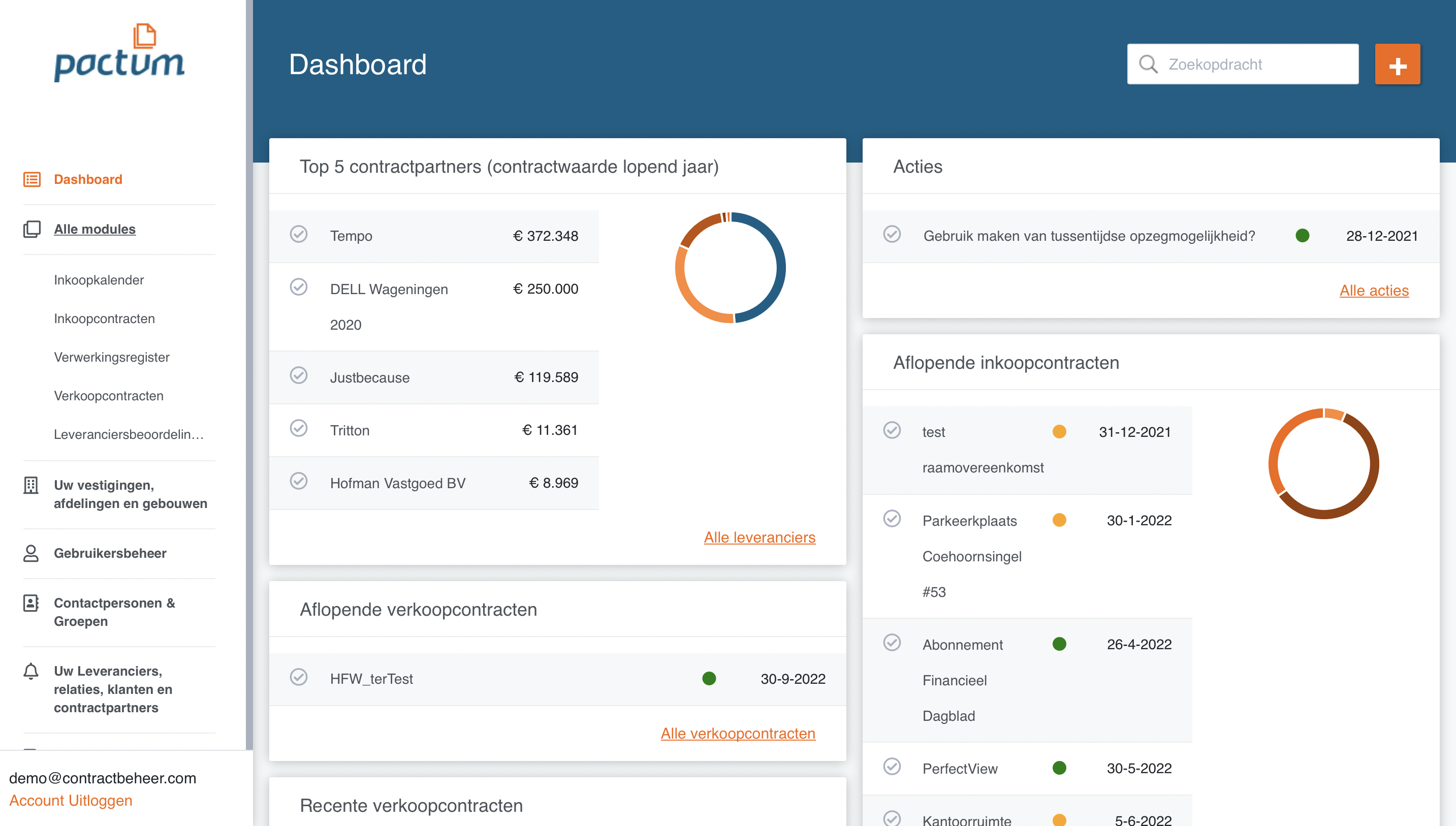Best AI Procurement Software for Enterprises

As enterprises face increasing complexity in sourcing, compliance, and supplier management, AI procurement software has emerged as a transformative solution. These platforms leverage artificial intelligence to automate and optimise every stage of the procurement lifecycle, enabling organisations to operate more efficiently and strategically.
What is AI procurement software and why do enterprises need it?
AI procurement software applies machine learning, natural language processing, and advanced analytics to automate and optimise the sourcing and purchasing lifecycle. Rather than simply digitising legacy workflows, these platforms actively recommend suppliers, flag contractual and compliance risks, and surface insights that enable faster and more confident decisions.
At an enterprise scale, manual qualification of suppliers, fragmented spend data, and inconsistent contract practices slow down sourcing and introduce risk. AI procurement tools address this by accelerating supplier discovery, enforcing policies automatically during approvals and contracting, and revealing savings and risk patterns that are otherwise invisible in spreadsheets and legacy systems.
The impact is not marginal. Enterprises that deploy AI-driven procurement routinely report materially shorter sourcing and contract cycles, fewer compliance breaches, and measurable reductions in unmanaged or “maverick” spend.
Learn More: AI in Procurement - The Complete Guide
Best AI procurement software by category
The AI procurement market spans multiple functional segments, and no single platform leads in every area. To make comparison practical, the solutions below are grouped by what they are best at sourcing and supplier discovery, spend analytics and forecasting, contract visibility and compliance, and autonomous negotiation for tail spend. Under each category you will find the top three tools in that segment based on capability strength, enterprise readiness, and proven adoption in regulated environments.
Best AI procurement software for sourcing and supplier discovery
Tools in this category use AI to identify, qualify, and recommend suppliers faster than manual research. They reduce the work of scouting new vendors, support diversification and risk mitigation, and compress the front end of sourcing cycles.
Scoutbee
Scoutbee uses graph based discovery to map multi tier supply chains and recommend suitable vendors based on fit and context. Its explainable matching model and due diligence signals make it appropriate for regulated and complex categories. Rather than replacing sourcing suites, it typically sits alongside them to remove upfront research time. Enterprises deploy it when entering new categories, replacing constrained suppliers, or de-risking second and third tier exposure.

Archlet
Archlet provides decision intelligence for sourcing events, modelling award scenarios across price, risk, ESG, capacity, and other trade offs without manual spreadsheet work. It can run independently or integrate into a broader procurement stack, giving teams structured evaluation without re-engineering existing tools. It is most often used in competitive RFPs where multiple competing objectives need to be evaluated transparently.
Fairmarkit
Fairmarkit automates RFQs for tail and mid tier spend by routing requests to qualified suppliers while enforcing procurement policy at the point of request. It acts as a controlled layer between business requestors and suppliers without requiring heavy IT deployment. Organisations use it to bring unmanaged spend back under governance and to capture value in categories that are too numerous or too low value to source manually.

Best AI procurement software for contract visibility, risk and compliance
These solutions apply AI to contracts before and after signature to expose risk, obligations, deviations, and compliance gaps. They improve control without expanding legal headcount and help prevent value leakage after award.
LEGALFLY
LEGALFLY speeds up the review of legal documents and helps to more effectively manage vendor obligations post signature. Contracts can be reviewed for compliance and business risk using playbooks defined by the legal team, reducing legal bottlenecks and allowing procurement teams to handle more of the contracting process independently. Post signature, the platform can be used to extract clauses, obligations, and compliance requirements across fragmented repositories. It is designed to integrate with procurement and legal workflows without a heavy configuration phase. Schedule a demo to find out more.

Icertis
Icertis analyses contract language and obligations to surface risk, policy conflicts, and compliance exposures across suppliers and jurisdictions. Its monitoring capabilities track fulfilment of contractual commitments post signature, supporting regulatory and audit needs in complex environments. It is typically deployed when enterprises want systematic control of post award risk and to reduce missed obligations at scale.
Sirion
Sirion connects contractual obligations to actual supplier performance and commercial outcomes, allowing deviations to be detected when terms are not being met in delivery. It is particularly suitable for services categories where leakage occurs after signature rather than in sourcing. Enterprises use it to govern outsourcing, IT services, and long term managed agreements where compliance and delivery risk extend well beyond contract execution.

Best AI procurement software for spend analytics and forecasting
These tools harmonise fragmented spend data and apply AI to surface savings opportunities, anomalies, and demand patterns. They operate as the visibility layer that informs category strategy, risk posture, and pipeline planning.
Sievo
Sievo consolidates and normalises spend from disparate systems into harmonised, queryable views that can be trusted across the organisation. Its analytics highlight leakage, savings signals, and trend patterns across business units while maintaining auditability and documented lineage for regulated environments. Enterprises typically deploy it when they require a reliable baseline and governance layer before automating downstream actions.

Coupa (spend analysis)
Coupa classifies and analyses spend at scale, surfacing patterns, anomalies, and benchmark insights across categories and suppliers. Its community intelligence layer enables organisations to compare performance against peers rather than in isolation. Although part of a broader suite, the analytics module is often deployed on its own when forward looking visibility, not just retrospective reporting is required.
Ivalua (insights)
Ivalua embeds AI-driven analytics within a configurable procurement data model that supports custom KPIs, category lenses, and regulatory reporting without routing data to external tools. It is well suited where integration depth and governance are prioritised over rapid deployment. Organisations use it to unify financial, contract, and supplier signals into a single governed analytics layer to inform sourcing and compliance decisions.
Best AI procurement software for autonomous negotiation and tail spend automation
These platforms run or assist supplier negotiations at scale using rules and learned behavioural patterns. They unlock value in high volume, low touch spend where manual negotiation is impractical but financial leakage is significant.
Pactum
Pactum executes autonomous negotiation workflows with suppliers within predefined commercial and policy constraints. It optimises price and terms without human intervention, enabling negotiation in categories that are too fragmented or low value for manual effort. Organisations adopt it when negotiation work is a bottleneck and opportunities are dispersed across a long tail of suppliers.

Keelvar
Keelvar uses agents to run sourcing and negotiation events end-to-end under structured, rule based governance. It is especially strong in logistics and direct materials where bidding logic is complex and time sensitive. Enterprises apply it to compress sourcing cycles while maintaining policy alignment and auditable decision logic.
Arkestro
Arkestro predicts optimal pricing and supplier selections before events are launched, placing AI upstream of sourcing to pre-empt manual comparison work. It integrates with existing suites to inject predictive recommendations into familiar workflows. Organisations use it to reduce variance and improve consistency across repetitive or recurring sourcing decisions.
Key features to look for in enterprise AI procurement solutions
Choosing an AI procurement platform means prioritising capabilities that create immediate operational gains without sacrificing governance or scalability. Below are some key features to look out for when evaluating solutions.
Automated sourcing and supplier discovery
AI accelerates supplier identification and qualification, replacing manual research with explainable matching. Dynamic scoring surfaces risk, performance, and diversity signals at the point of choice.
AI-powered spend analytics and forecasting
Modern platforms provide real-time visibility across categories and entities with predictive models to flag leakage, savings, and demand shifts before they impact budgets. This becomes the analytical backbone for category strategy.
Contract and compliance management
AI assists with drafting, clause extraction, renewal alerts, and obligation monitoring, reducing legal load without compromising control. Embedded checks enforce regulatory and internal policy compliance across jurisdictions.
Integration with ERP and legacy systems
Enterprise tools should integrate cleanly with SAP, Oracle, Microsoft Dynamics, and adjacent systems, to ensure a single source of truth. API support enables custom extensions without destabilising core data.
Custom workflow automation
Approval chains, routing, exception handling, and audit trails can be configured once and enforced consistently. This eliminates manual decision points that create compliance drift and cycle time drag.
Security and data privacy
Encryption, granular access controls, anonymisation, and full audit logging are non-negotiable for regulated sectors. Platforms must produce governance artefacts suitable for audit, litigation hold, and internal assurance.
Pricing models and total cost of ownership
The cost of AI procurement software extends beyond licence fees, and most procurement teams underestimate the implementation and change components. Commercial models are typically structured as subscriptions, either per user, per entity, or usage based (for example by transaction volume or spend under management), but the contractual shape says little about the true cost to the business.
The largest cost driver in year one is usually implementation and integration, which can equal 20 to 40 percent of the first year spend once workflow configuration, data migration, and change management are included. Ongoing support, training, upgrades, and vendor delivered custom work also accumulate over time and should be included in the business case if comparisons are to be fair.
When assessing ROI, relevant questions include how quickly time to value is reached, what external legal, advisory or FTE costs are displaced, and whether the solution reduces compliance exposure or value leakage in measurable ways. Negotiations should focus on reducing total cost rather than headline price by bundling implementation and support up front, securing volume discounts for multi-entity deployments, and requiring transparent and predictable upgrade terms.
Key takeaway: the cheapest platform on paper is rarely the cheapest in practice. The correct anchor demonstrates ROI with cost transparency, not the smallest sticker number.
How to select the right AI procurement software for your business
Selecting an AI procurement platform is not a tooling decision but a cross functional change decision, and the organisations that succeed treat it accordingly. The starting point is to define business requirements and success metrics with procurement, IT, legal, and finance in the same room, and to prioritise the features and integrations that are non-negotiable.
A cross functional selection team should run a structured pilot or proof of concept using real workflows and data, not demo environments, so that usability, data quality, and enforcement can be judged in context.
Vendors should be assessed not just on current features but on support, roadmap alignment, and the ability to operate in regulated and global environments. A business case should quantify ROI, risk reduction, and strategic value, since executive sponsorship will not be secured on qualitative reasoning alone.
Before committing, verify that the platform can meet compliance obligations in your industry, scale across entities and regions, integrate with your ERP, and produce explainable and auditable AI outputs backed by a track record of delivery.
If you are specifically looking to automate the contracting and legal layer, it is worth reading this short guide on how to assess legal AI platforms in practice.
Expert advice: skipping the testing phase is the single most common cause of failed procurement transformations. Battle test any solution before you commit.
Conclusion and next steps
Choosing the right AI procurement software is a strategic decision that can unlock significant value for your enterprise. By focusing on advanced features, transparent pricing, and proven use cases, procurement leaders can drive efficiency, compliance, and innovation at scale.
Ready to take the next step?
If the contracting and legal layer is in scope, you can request a LEGALFLY demo or explore their case studies to see the impact AI is having in this part of the procurement stack.
.svg)